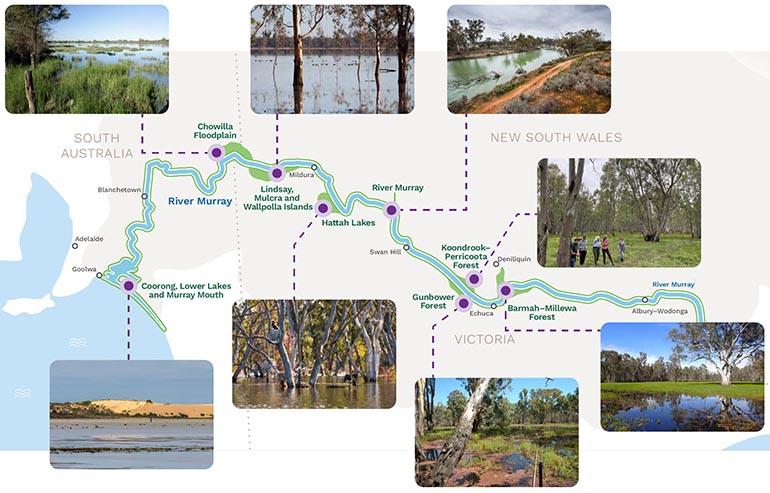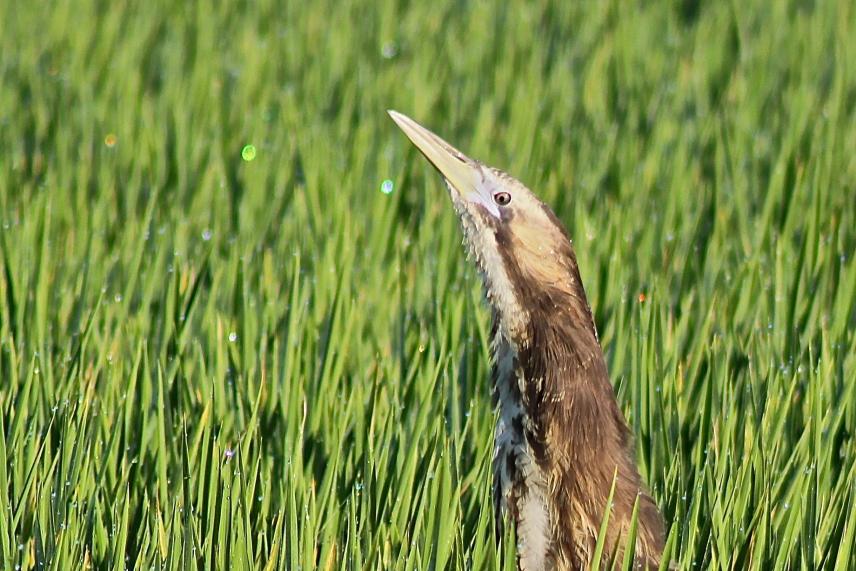In 2003 in the middle of the Millennium drought, The Living Murray (TLM) program was born.
It’s a joint initiative funded by the Australian Government and Basin state governments, coordinated by the Murray–Darling Basin Authority (MDBA).
TLM was set up as an ambitious program involving both engineering works and recovery of water for the environment to return ecologically and culturally significant sites along the Murray River system to better health.
In every sense, TLM was the blueprint for action for future reforms like the Basin Plan, because everybody agreed that doing nothing was simply not an option.
In 2003 the ‘First step’ decision was announced to:
- Recover an average of 500 gigalitres (GL) per year of water for the environment to improve the health of icon sites.
- Deliver infrastructure works to increase the environmental benefits from using this water.
- Involve First Nations people in planning and management of the icon sites.
The program focuses on maintaining the health of ‘icon sites’, which are ecologically and culturally significant floodplains, wetlands and forests along the River Murray, the Murray’s estuary and the river itself:
- Barmah–Millewa Forest
- Gunbower Forest
- Koondrook–Perricoota Forest
- Hattah Lakes
- Lindsay, Mulcra and Wallpolla Islands
- Chowilla Floodplain
- Coorong, Lower Lakes and Murray Mouth
- River Murray

Today, TLM contributes to the broader water reform journey under the Basin Plan to support healthy rivers and communities up and down the Murray–Darling system.
Reflecting on the past 2 decades of TLM, MDBA Chief Executive Andrew McConville said the program had forged an enduring partnership between the Australian Government and Basin state governments to restore and protect the river system.

“The Living Murray is about sharing responsibility to restore and sustain the vital natural assets along the river system, harnessing community, farming, industry, and government goodwill to do the right thing, which is in all our interests,” Mr McConville said.
“Over the life of the program, the health of special River Murray icon sites has improved through the addition of infrastructure, land and river management practices and the delivery of water for the environment.
“20 years ago, all icon sites were under stress and rated in ‘fair ecological condition’ or ‘need of attention’. Now, most sites are in ‘good’ or ‘excellent condition’ which goes to show that where there is a plan and sustained commitment, we can make a difference and deliver rivers for generations.”
20 years later
Achievements of The Living Murray program over the past 20 years
Over $1 billion has been invested by governments in establishing and running The Living Murray.
The package of infrastructure works were all built and commissioned by 2016 to support the delivery of water for the environment at icon sites.
480 gigalitres (GL) of water makes up The Living Murray portfolio (long-term diversion limit equivalent).
To date over 4,000 GL of water has been delivered to support rivers, floodplains and the plants and animals that depend on them.
The Living Murray has been monitoring the condition of the icon sites since 2006. Over 1,000 monitoring projects have been delivered measuring the outcomes of water for the environment on vegetation, waterbirds, fish and more.
Most icon sites are on a trajectory of improving condition, demonstrating that using environmental water and works help to improve river health.
The Indigenous Partnership Program, established in 2006 supports First Nations involvement in environmental water management.
Whilst the program has achieved significant outcomes over 2 decades, those involved with TLM still recognise the need for continued learning, evolution and improvement.
The theme for the 20-year anniversary milestone, ‘much achieved, much to do’, reflects the continued commitment and goodwill to continue working together for improved outcomes for the river and its communities.
Spotlight on icon site: Barmah–Millewa Forest
The boom of the bunyip bird
Bitterns are considered a flagship species for encouraging and promoting healthy wetland management. Barmah–Millewa Forest is estimated to support at least 30% of the Australian population of Australian bittern and is an extremely significant site for their breeding. This endangered species is estimated to have a global population of no more than 2,500.
Bitterns are of great cultural significance. Their eerie booming mating calls in spring and summer are through to be linked to the Dreaming Stories of the bunyip.

Bitterns are very mysterious and rarely seen. Working out how many and where they are is best estimated using the sound of their distinctive calls. Together with Traditional Owners, Barmah–Millewa site managers have been monitoring bitters and their breeding response since 2025.
In years where more water enters the forest, a greater number of bittern calls are detected. Additionally, water levels are crucial for the breeding timing and success for the Australasian bittern.
Findings are being used to manage water in the forest to support this endangered and culturally significant bird.